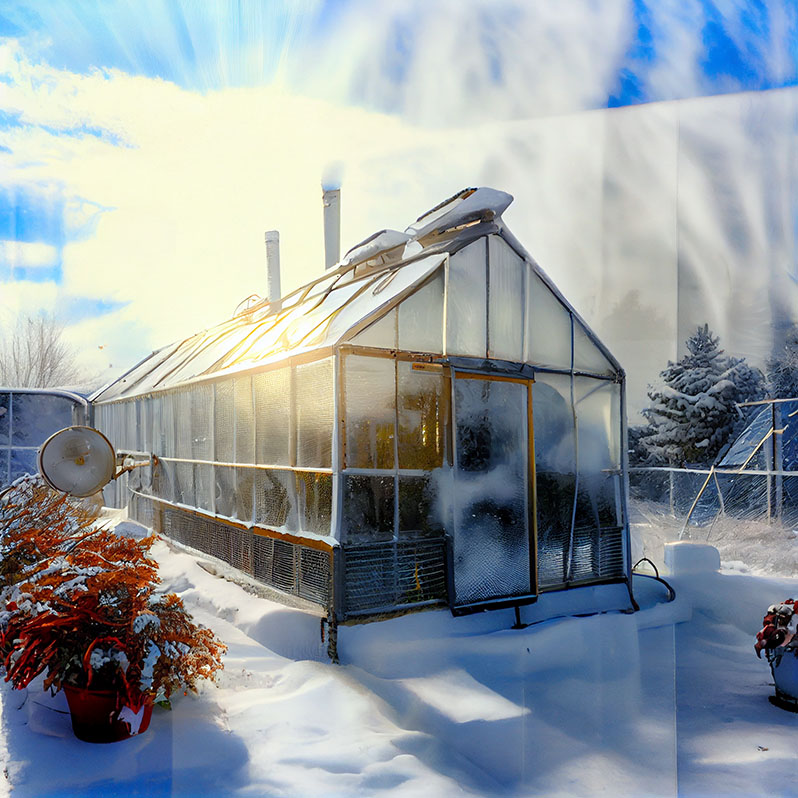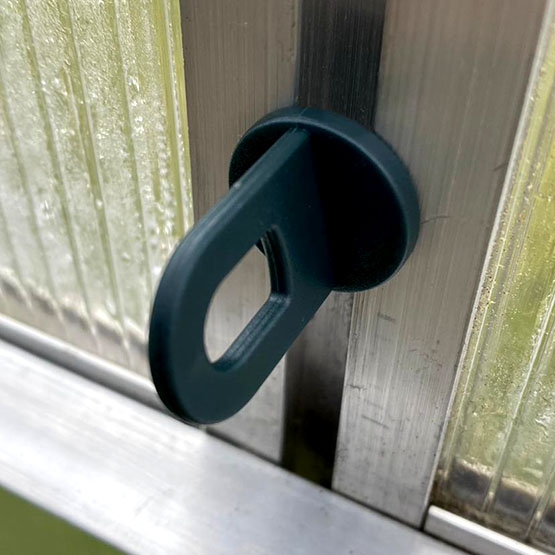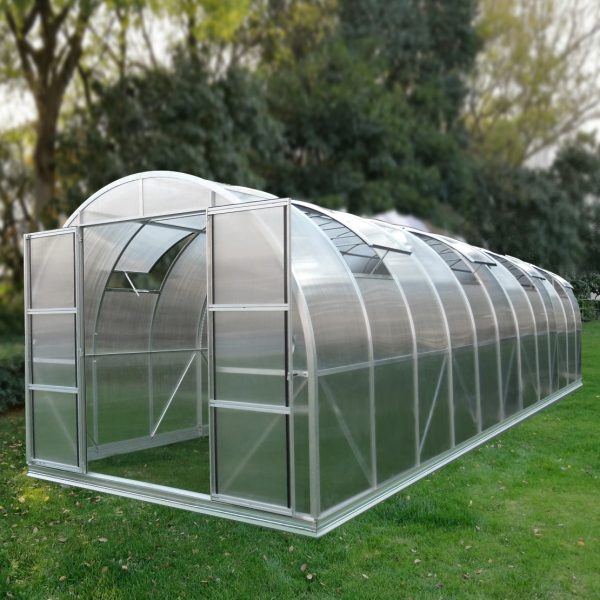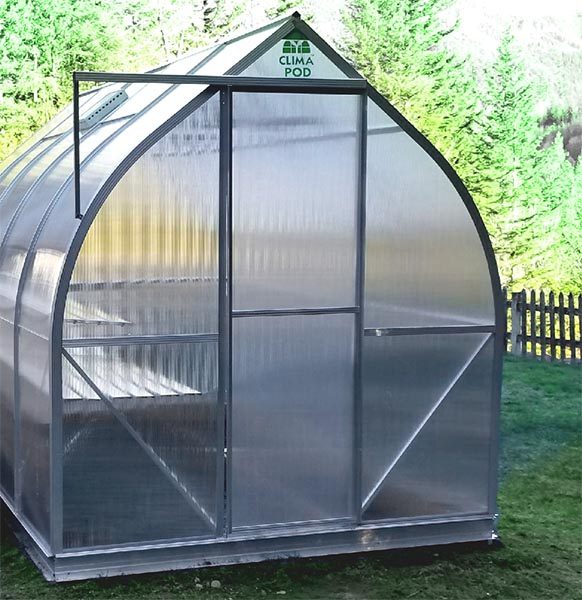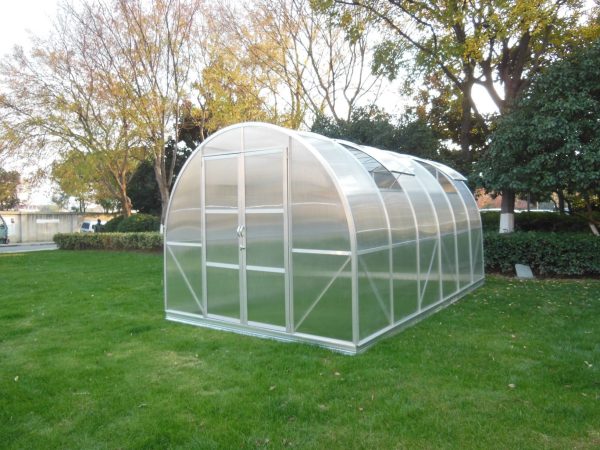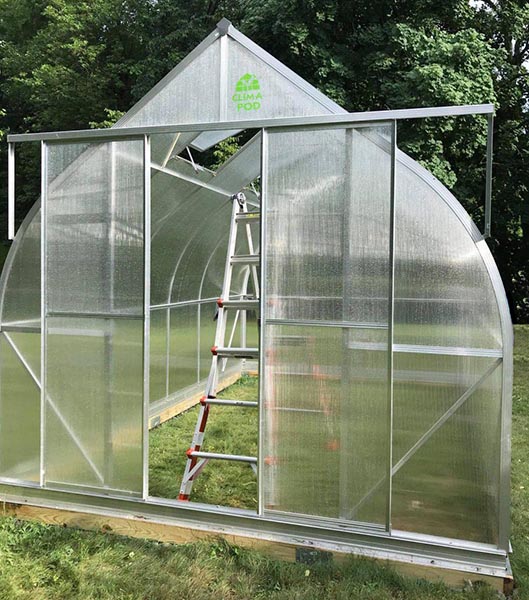Which of the 5 greenhouse heating methods is the best for you? Biological heating, infrared heating, water heating, electrical heating, or air heating? Controlling the temperature in your greenhouse is an important step for getting healthy, efficient harvests every time, especially if you’re growing in the winter season. There are many ways to heat your greenhouse, and they may be simpler than you think!
- Biological Heating
- Infrared Heating
- Water Heating
- Electrical Heating
- Air Heating
Greenhouse Construction
An important part of greenhouse heating is making sure it retains the heat you put into it.
Clear greenhouses, without covers, mirroring, or toning, will stay warmer. Double glazing your greenhouse is one of the most effective ways to retain heat! It’s recommended you double glaze your greenhouse panels if you plan on growing any produce.
Of course, you should always build your greenhouse with sun exposure in mind, so your greenhouse gets plenty of natural light. Sunlight is not only required for photosynthesis, but also to drastically increase the temperature of your greenhouse.
Winter Greenhouse Tips: To maximize the heat you get from sunlight, you can take black painted plastic jugs of water and place them opposite the sunny side of the greenhouse – the black paint absorbs heat from sunlight and warms up the water, which provides better insulation – or insulate the interior walls using foam blocks.
Always make sure the cold air in your greenhouse circulates from bottom to top. This way, the heavier cold air doesn’t sink down over your plants and chill them. Instead, as the air warms, it will rise naturally. It’s also strongly recommended you keep your greenhouse moist, because the humidity will help retain heat as well.
Biological Heating
Biological heating uses the heat produced by decaying organic matter to warm the greenhouse.
Cheap resources like manure, leaves, vegetable scraps, and sawdust can provide a surprising amount of biological heating and nutrients for the soil. Biofuel is placed at the bottom of garden beds and covered with at least 30cm of soil. You can steam your biofuels (like hay bales) with hot water to maximize their effectiveness. Decomposing horse manure can reach temperatures up to 160 degrees Fahrenheit in just 7-10 days!
This method is very popular because it’s so accessible, affordable, and convenient. It is one of the oldest methods of crop heating in the world and continues to be one of the most common. Biological heating is best used for smaller, personal greenhouses, and is not as effective in larger structures or colder areas. In especially cold climates, it may be best to use biological heating as well as another heating system.
To read more about biological heating, click here.
Electrical Heating
Electrical heating works by conducting electricity through special heat mats or cables beneath the soil.
Just like a heated blanket or hot electric pad, conducting electricity warms a heating element, which is wrapped in a protective material to disperse the temperature evenly. Mats provide more uniform heat across a surface than cables, but use more material.
Electrical heating one of the most popular options today because it is simple, accessible, and easy to modify. Mats and cables are widely available because of their popularity, but electrical heating can be expensive due to the price of electricity, especially when it comes to larger greenhouses.
IR Heating
Infrared heating works just like the sun, where special lights produce warming infrared radiation.
Infrared lights shine a beam down on plants and directly warm everything the radiation touches. This creates a two-step heating process, where first the radiation provides warmth to every solid object, and then the plants warm the air as they disperse the heat. This method is best suited for small, personal greenhouses.
Infrared heating is very effective, doesn’t dry out the air or dilute any of the oxygen in the greenhouse, and does not produce emissions. Infrared lights have a relatively low energy cost, and the temperature can be easily and precisely controlled with a remote. The lights will produce warmth as soon as they’re turned on, but they stop producing warmth as soon as you turn them off, so infrared heating is not as good at providing or maintaining ambient heat. Infrared radiation only provides heat to the solid objects it touches, so anything not directly under the lights may not be as well warmed. It’s best to have a fan or HVAC system to help disperse and circulate heat with an infrared heating system.
To read more about infrared heating, click here.
Water Heating
Water heating uses hot water pipes running through the greenhouse to generate heat.
The water is heated by a gas, oil, or electric boiler, then the hot water or steam is pumped through pipes above and below the soil to transfer heat. Water heating is best for large operations or greenhouses that are located close to residential buildings.
Plastic pipes provide the advantage of being able to move and change configurations if necessary, but laying the pipes can be labor and time intensive. Depending on the method used to heat the boiler, it may produce emissions that need to be piped out of the greenhouse.
Air Heating
Hot air heating pumps air from a main heater directly into the greenhouse.
This method takes oxygen from either inside or outside of the greenhouse, heats it, and then circulates it back in. Horizontal fans need to be installed with air heating systems to ensure the temperatures remain uniform. Air heating is best suited for greenhouses with raised beds.
The method used to heat the air can vary, but keep in mind that if you’re using combustion (like a coal, oil, or propane burner) then the gasses and fumes are also pumped back into the greenhouse. While higher carbon dioxide levels can be beneficial for some plants, too much can be suffocating. Hot air heating tends to dry out the air, so monitoring air quality and humidity are both very important. Remember that this method MUST have fans or an HVAC system to support it.
To read more about greenhouse fans, click here.
Wrap-Up
There are many options for greenhouse heating, and the one that’s best for you depends on your individual needs. Not every greenhouse is constructed the same, and some heating methods should not be used in certain greenhouses, so choose carefully!
- Biological heating uses the heat produced by decaying organic matter, or “biofuels,” to warm the greenhouse.
- Electrical heating works by conducting electricity through special heat mats or heated cables beneath the soil.
- Infrared heating works just like the sun, where infrared lights produce warming infrared radiation.
- Water heating uses hot water pipes running through the greenhouse to generate heat.
- Hot air heating pumps air from a main heater directly into the greenhouse.
ClimaPod greenhouses can be easily customized to work with any heating method you choose, and are versatile in a variety of environments. To shop for affordable, durable, and quality greenhouses and accessories, visit ClimaPod.com!
To read more articles about greenhouse heating, click here.
Author: JG

